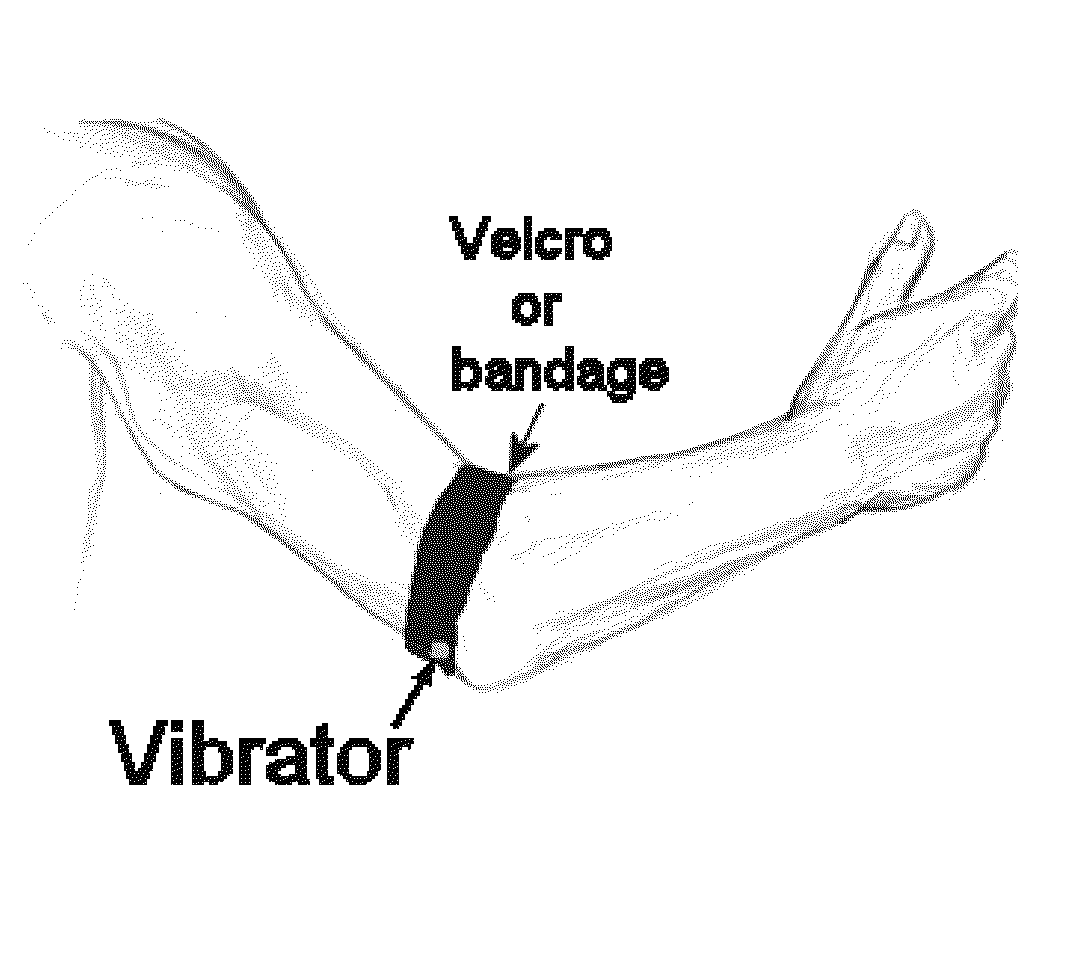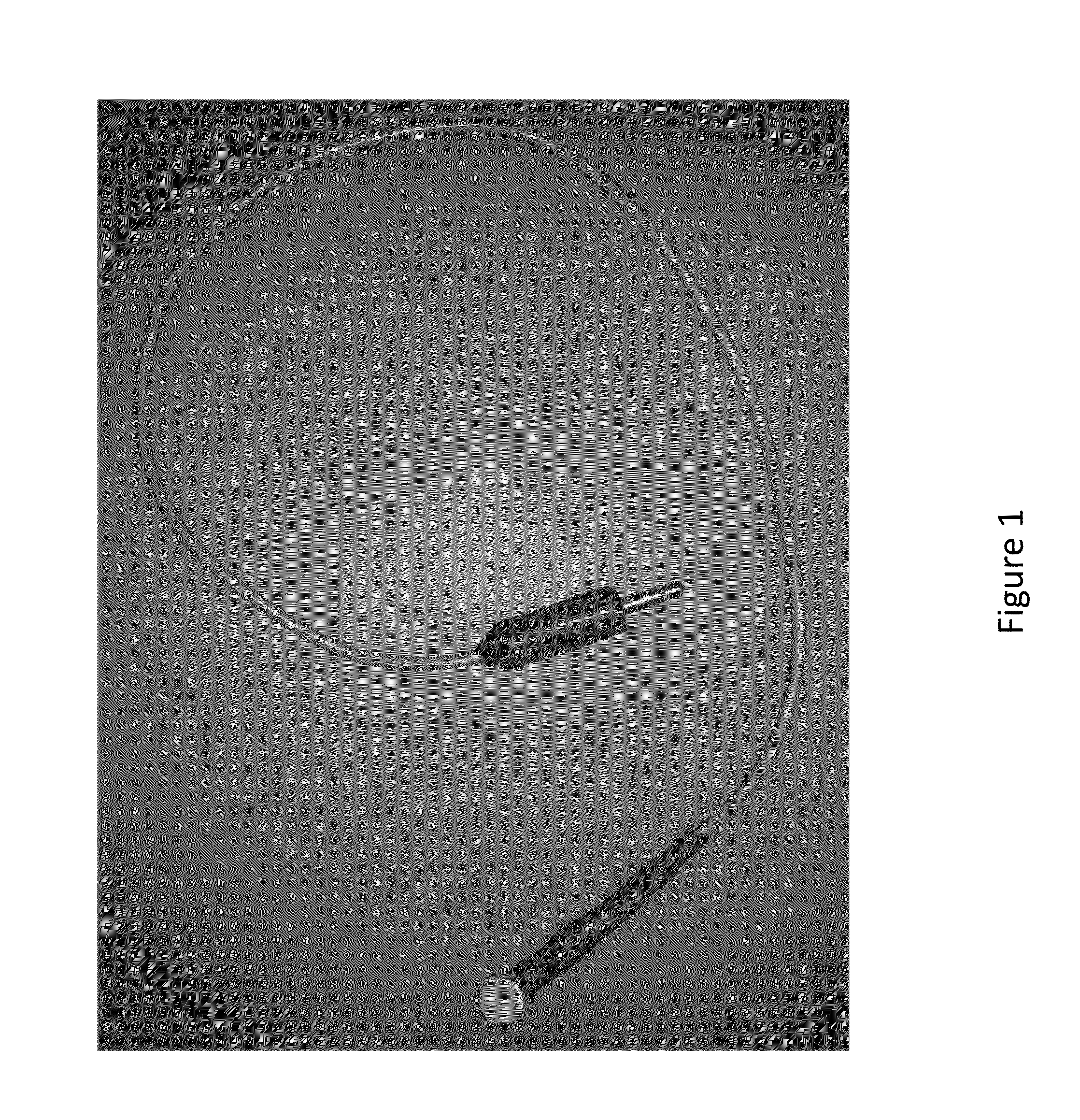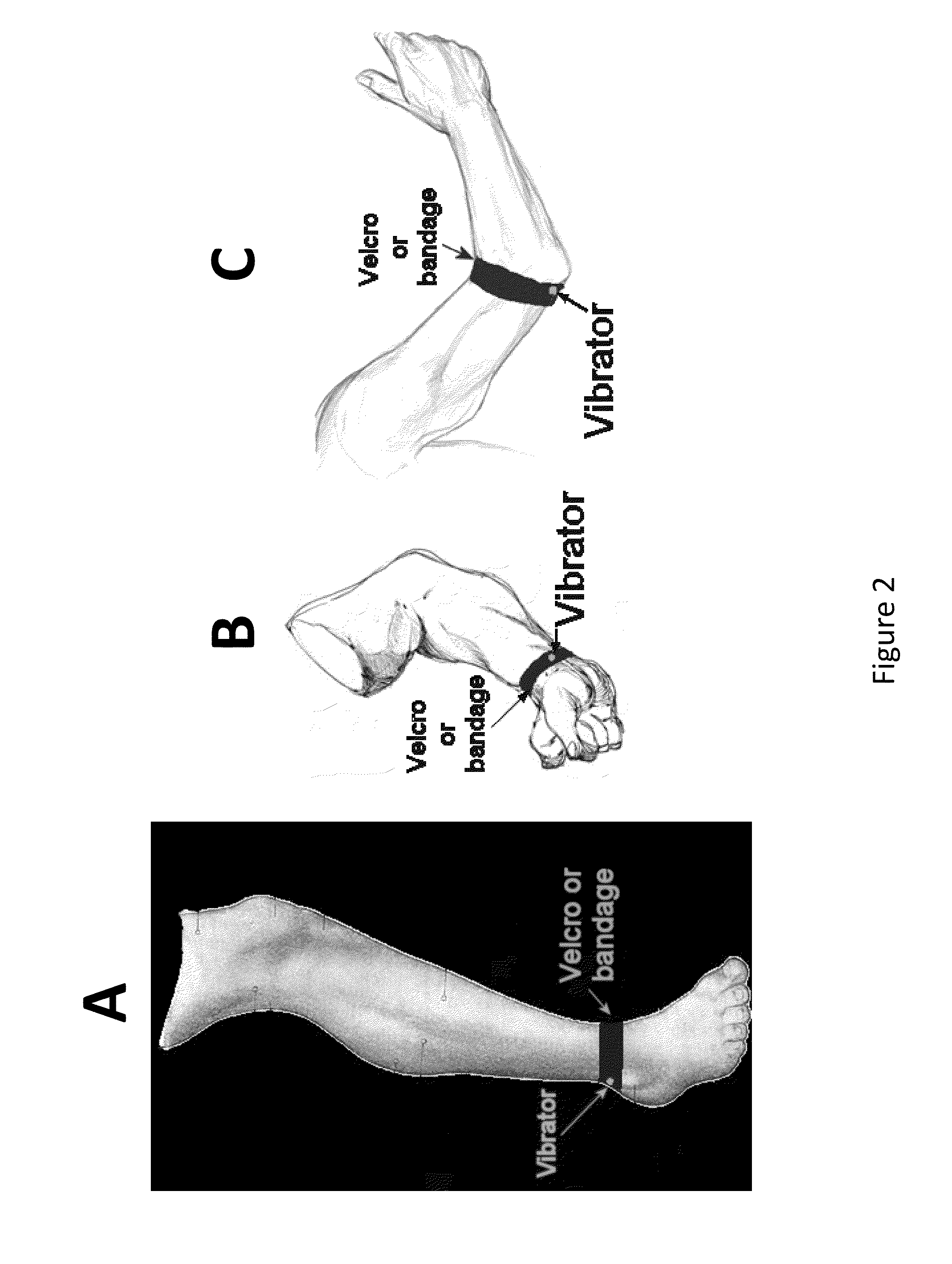Device, System and Method for Facilitating Breathing Via Simulation of Limb Movement
a technology of breathing and limb movement, applied in the field of breathing through simulation of limb movement, can solve the problems of tracheostomy, serious infection concerns of tracheostomy, and increase the level of carbon dioxide or oxygenation in the body, so as to increase the air intake and enhance the effect of air intak
- Summary
- Abstract
- Description
- Claims
- Application Information
AI Technical Summary
Benefits of technology
Problems solved by technology
Method used
Image
Examples
experimental examples
[0079]The invention is further described in detail by reference to the following experimental examples. These examples are provided for purposes of illustration only, and are not intended to be limiting unless otherwise specified. Thus, the invention should in no way be construed as being limited to the following examples, but rather, should be construed to encompass any and all variations which become evident as a result of the teaching provided herein.
[0080]Without further description, it is believed that one of ordinary skill in the art can, using the preceding description and the following illustrative examples, make and utilize the present invention and practice the claimed methods. The following working examples therefore, specifically point out the preferred embodiments of the present invention, and are not to be construed as limiting in any way the remainder of the disclosure.
example 1
Limb stimulation in subjects with congenital central hypoventilation (CCHS)
[0081]Experiments were conducted to examine the effect of limb stimulation on the breathing rate of subjects with congenital central hypoventilation (CCHS). FIG. 11 shows the increase in breathing rate accompanying three periods of foot movement (indicated by shaded areas) in 30 normal subjects (control) and 15 children diagnosed with congenital central hypoventilation syndrome. Foot movement substantially increased breathing rate, and much more so in the patients than in normal subjects.
[0082]The purpose of this experiment was to demonstrate the basic tenet of the present method, that nerve signals from foot movement enhance breathing, and is particularly effective in particular patients with breathing disorders. Respiratory movements were recorded by an air-filled bag held in place with a belt on the thoracic wall; a non-compliant tube lead from the bag to a pressure transducer. All physiologic signals were...
example 2
Respiratory analysis of subjects before and after stimulation
[0084]Experiments were conducted to examine the effects of limb stimulation on the respiration of breathing-impaired subjects. The subjects were two young adult patients with severe spinal injury at upper thoracic levels at least 1 year post-trauma. Subjects were instrumented with thoracic wall and abdominal excursion sensors, oxygen saturation sensors, electroencephalographic, eye movement, and electrocardiograph leads (3 lead ECG) (SomnoMedics Inc; Fla.) for recording of physiological measures and assessment of sleep state, and recorded for two consecutive nights. Vibration devices were placed on the palms of the left hand, and parameters were set at continuous vibration with pulse durations of 0.4 sec, inter-pulse duration of 0.4 sec, and continued for 460 min. FIG. 12A and FIG. 12B show numerical values for respiratory measures from subject 1 and subject 2, respectively. FIG. 12C demonstrates that the respiratory distu...
PUM
 Login to View More
Login to View More Abstract
Description
Claims
Application Information
 Login to View More
Login to View More - R&D
- Intellectual Property
- Life Sciences
- Materials
- Tech Scout
- Unparalleled Data Quality
- Higher Quality Content
- 60% Fewer Hallucinations
Browse by: Latest US Patents, China's latest patents, Technical Efficacy Thesaurus, Application Domain, Technology Topic, Popular Technical Reports.
© 2025 PatSnap. All rights reserved.Legal|Privacy policy|Modern Slavery Act Transparency Statement|Sitemap|About US| Contact US: help@patsnap.com



